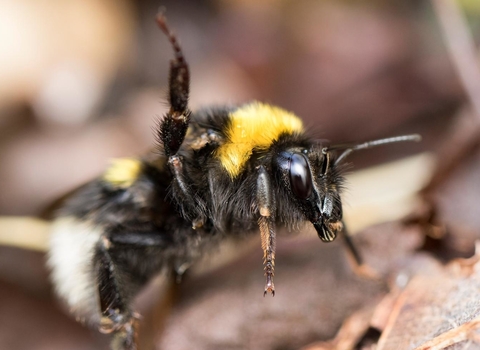
Garden Bumblebee ©Chris Lawrence
Garden bumblebee
Unsurprisingly, the garden bumblebee can be found in the garden, buzzing around flowers like foxgloves, cowslips and red clover. It is quite a large, scruffy-looking bee, with a white tail. It nests in colonies.
Scientific name
Bombus hortorumWhen to see
March to OctoberSpecies information
Category
Statistics
Length: up to 2.0cmCommon.
